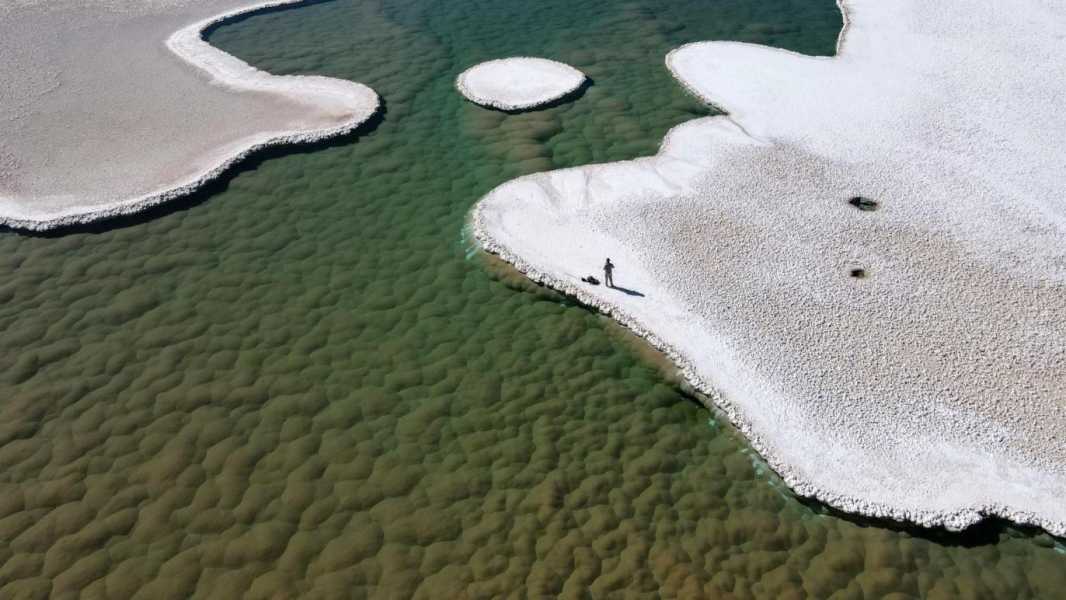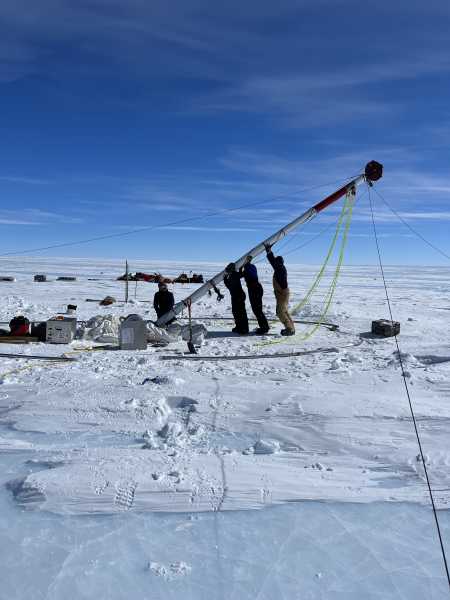
Green hills of stromatolites flourish on the floor of a lagoon in Argentina's Puna de Atacama.
A mosaic of crystal-clear lagoons and vast salt flats in Argentina's Puna de Atacama Desert forms an otherworldly ecosystem “unlike anything scientists have ever seen,” researchers say.
The previously unknown lagoons contain mounds of rocks covered in microbes that at first glance resemble some of the first recorded life forms on Earth. The lost place was discovered by chance by scientists who spotted a network of strange pools in satellite images of northwest Argentina.
Puna de Atacama is a vast plateau located more than 12,000 feet (3,660 meters) above sea level on the border of Argentina and Chile. The high altitude, extremely dry conditions, and scorching sun create a harsh environment in which few plants and animals survive.
Brian Hynek, an assistant professor of geological sciences at the University of Colorado Boulder, and Maria Farias, a microbiologist and co-founder of the environmental consulting firm PunaBio, walked for miles across the desert landscape before discovering the lagoons.
“It's unlike anything I've ever seen, and, in fact, unlike anything any scientist has ever seen,” Hynek said in a statement.
Twelve pools of shallow, crystal-clear water surrounded by mountains form a newly discovered alien ecosystem that spans 25 acres (10 hectares) of desert, according to the statement. Beneath the surface of the lagoons, the researchers found small mounds covered in green microbial growths.
“It's amazing that we can still find such undescribed phenomena on our planet,” Hynek said, adding that the discovery was “the most significant revelation of my life.”
The living mounds, which are about 15 feet (4.6 m) in diameter and several feet high, offer a window into the earliest stages of life on Earth and perhaps even ancient life on Mars, Hynek said. Early observations suggest they may be stromatolites — complex communities of microbes whose secretions harden into rock layers — similar to those that existed during the Archean period (4 billion to 2.5 billion years ago), when the atmosphere was oxygen-free.
Stromatolites continue to form in a variety of marine and freshwater environments, but they are much smaller than their ancient counterparts. Mounds in the Atacama lagoons were similar in size to Archean stromatolites, which, according to fossil evidence, could reach heights of 20 feet (6 m). The Atacama stromatolites were primarily composed of gypsum, a mineral common in fossilized stromatolites but absent from modern specimens.
Sourse: www.livescience.com





